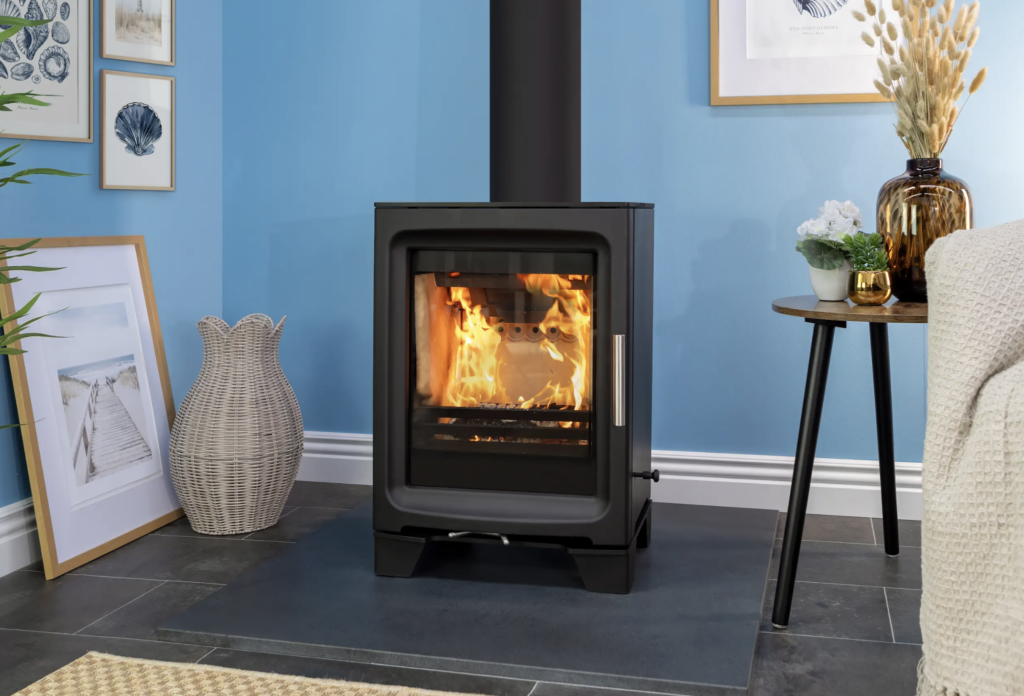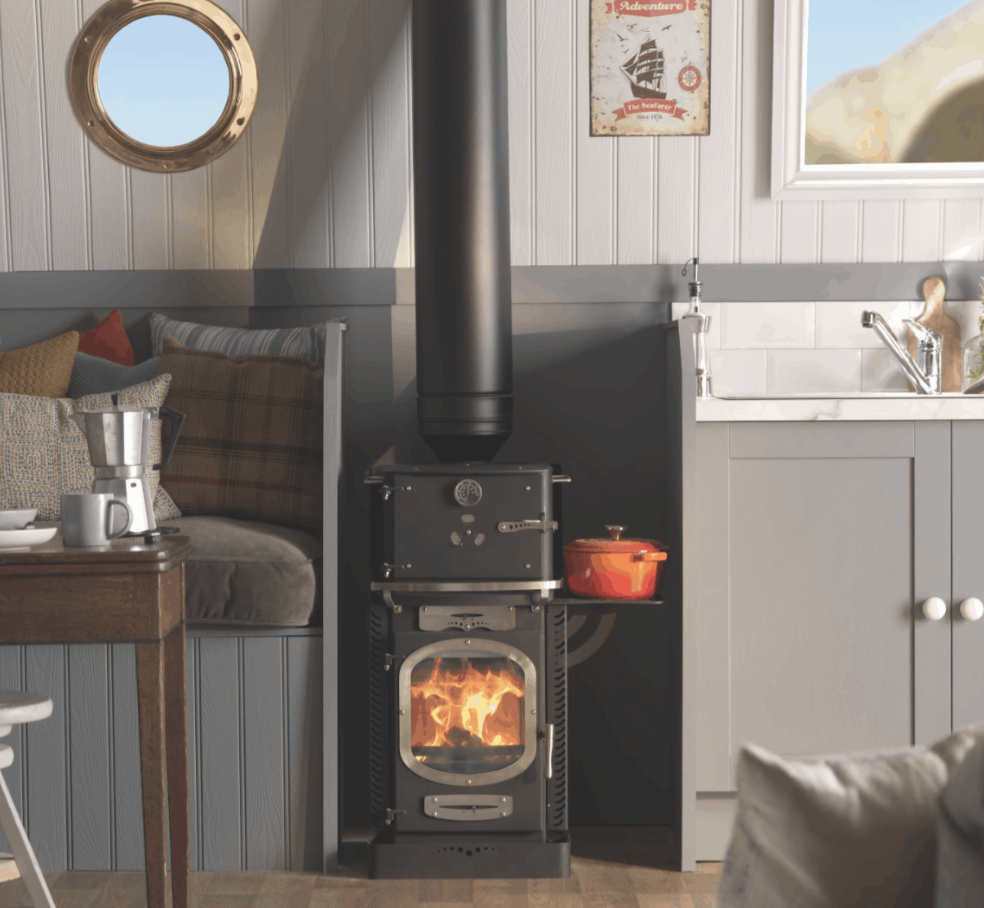Most people would place a wood-burning stove physically, and perhaps in their mind’s eye, too, in a lounge or living room. After all, that is where most people reside in their home when they are either not in bed sleeping or in the kitchen preparing food.
If you’ve ever thought about having a wood-burning stove in your kitchen, the heart of your home, you are certainly not alone. It is possible to have a stove in your kitchen. First, you do need to be aware of the air pressure in a kitchen, which will impact if you want to fit a wood-burning stove.

Pressure Considerations:
As most kitchens will have an extractor fan, there can be negative air pressure – as air is essentially being taken from the room. This negative pressure can mean gases created by burning wood can linger in the chimney, which is not ideal. You need positive air pressure to help remove these gases. You can fit an extra air vent between the stove and extractor fan – this should give sufficient air pressure so the stove and extractor fan are not “fighting” for air. Alternatively, you can fit an outside air kit that ducts air into the stove, providing positive air pressure to allow a healthy updraft to remove gases. When you have a survey, your installer will be able to advise accordingly as to what is best for your home.
Cooking by wood?
Some people decide on a stove for the kitchen if they want to cook on it – our Go Eco Adventurer 5 stove is perfect for this. This stove has a hob and oven, allowing you to cook anything from a bacon sandwich to a roast chicken. This stove is mainly designed for glamping tents and narrow boats, but it can also work perfectly well in a “bricks and mortar” home. That said, not everyone will want a kitchen-located stove for cooking; for these customers, there is a huge range to choose from. Our full range of wood-burning stoves can be found here.

Other Options:
If you love the idea of a wood-burning stove to sit pride of place in your kitchen but perhaps don’t want the work involved with burning wood, then you do have other options available. You can have a gas or electric stove. Both have that enchanting traditional stove look, but without the work.
Wood vs Gas Stove – Key Considerations:
Environmental Impact – Gas is a fossil fuel, whereas wood, if sourced correctly, is a highly sustainable renewable form of energy. Wood is considered a cleaner fuel than gas.
Safety Aspects – You will need your gas stove serviced annually as a minimum. Poorly serviced gas appliances can be deadly. However, when they are working as intended, they are generally very safe. They also have safety features such as flame failure detectors, oxygen sensors and room temperature control. Wood-burning stoves are a little different – and more simple in some elements. They won’t need to be serviced in the same way a gas stove would. However, the primary safety issues with wood come when lighting and filling the stove when lit – there can be a risk of smoke entering a room.
Cost Considerations – The cost of a wood-burning stove vs a gas stove varies hugely. Some gas stoves will be cheaper than a wood stove and vice-versa. A good idea is to have a budget in mind and then, if you’re undecided if you want a gas or wood stove, look at what is available within your budget – quite often, you will reach a decision very quickly using this approach, as you will be eliminating any stoves which are not in your price range.
Aesthetic Values – One of the reasons people buy stoves is for the way they look, and also the way they sound – especially so for wood-burning stoves, the pop and crackle of wood as it burns, and of course the aroma as the wood burns is for some, enchanting.
If you’re not sure about a wood-burning stove, and you don’t have gas mains – or you don’t want gas there is the option of an electric stove for your kitchen. Here are just a few advantages of an electric stove:
Easy Installation: Since there’s no need for a chimney, electric stoves can be installed in virtually any room, including kitchens. Simply plug them into a standard electrical socket and enjoy.
Heat Control: With user-friendly remote controls, you can effortlessly adjust heat settings without leaving the kitchen table. Tailor the warmth to your liking with just a few clicks.
Aesthetic Appeal: These units often come with impressive flame effects, providing the cosy ambience of a traditional fireplace without the need for logs or gas.
Versatile Design Options: From wall-mounted units to freestanding models, electric fires offer a variety of styles to complement any home décor.
Whatever you decide, rest assured – you can have a wood-burning stove in your kitchen (or gas or electric); you just need to decide what will be best for you and your circumstances.








